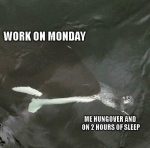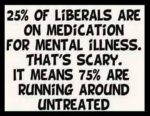I had a chance to visit Spain late last summer, and it was quite a glorious experience. Spain is a beautiful, vibrant, wonderful place with tremendous food, amazing architecture, and a very European way of life – which is to say, all about sun, sangria, and siesta. If you ever get a chance to visit Valencia, I highly recommend it – the city has perhaps the very best combination possible of both Spanish and Italian architecture, and it is genuinely a gorgeous place.
The night we arrived in Valencia, we checked into a really beautiful hotel near a huge roundabout south of the city centre. The chap at reception was friendly enough, and despite being quite fatigued from the journey, I asked him a question about a curious thing that I had observed on the walk from Valencia Nord (or Joaquin de Sorolla, whichever one you prefer – something to do with local versus regional trains, I think).
You see, when you are in Spain, if you travel to the other regions of the country, such as Catalunya or Valencia, you will often find that all of the signs, and the menus in the restaurants, and many of the public transport schedules, will be written in two different sets of words. If you look closely (and you have some facility for languages, as I apparently do), you will notice that the two sets look very similar, but are actually VERY different.
Two Peoples Separated by an Uncommon Language
That map above shows you the linguistic and dialectical diversity of Spain itself. During my conversation with that quite gregarious chap at the hotel that night – turns out, he was from Italy – I learned that the city authorities insist on writing everything in Valencian first, and Castillian (what you and I call “Spanish”) second. And this Italian gentleman was rather incensed by the whole thing, because he found it nearly impossible to find good schools for his children that would provide an education that would stand them in good stead beyond Valencia.
If you further examine Valencian, you will quickly find that it is essentially a dialect of Catalan, the native language of Catalunya. Valencians and Catalans can essentially understand each other pretty well – in the same way that Damn Yankees and Limeys can more or less understand each other, though a Southron and a Cockney would likely need subtitles to understand just what the hell each is saying.
And, if you spend longer than about ten minutes in Barcelona, you will immediately discover that Catalan is rather similar in some ways to French – which, if you look at the map, isn’t actually in the least bit surprising.
Now, the language issue in and of itself isn’t that big a deal – if you speak Spanish (Castillian) in Barca, you’ll be just fine 99.9% of the time. The true issue lies in the extreme nationalism that the Catalans (and the Valencians too) have with respect to their language and identity.
The Catalans have a very odd political situation – they have essentially a dual form of government, with substantial regional autonomy, but no ability to raise taxes independently of the central government. Both their regional and national politics have come to be dominated by batshit-crazy leftists – they live in the most economically prosperous part of Spain (and one of the nicest parts of the entire world, as far as I’m concerned), but they are mostly socialists. They have been waging a multi-decade campaign for independence from Spain, and they want to establish their own country along the eastern coast, where ONLY Catalan will be taught. (It’s worth noting that the movement does appear to be dying out within Catalunyan yoots, which I suppose is one very, very minor point in the favour of the young and stupid…)
Unsurprisingly, the prevalence of regional subcultures can cause tension, confusion, and difficulty between the various peoples involved, especially when those subcultures are vocal and dominant enough to want to establish national identities of their own.
This, right here, is the true downside of nationalism – where you have peoples living side-by-side, who share a number of common bonds, including faith, history, blood, tradition, and yet are driven apart by language.
Which brings us, after a bit of a digression, to the problem that is modern Ukraine.
The Frankensteinian Nation
To understand why Ukraine is such a huge headache for so many different powers, you have to look (inevitably) at a map. So here’s one, which I shared with my Telegram followers (join in the conversation if you haven’t already):

That map breaks down the historical evolution of Ukraine as a body politic. Here is another one that you can put on top of it, showing the ethnic and linguistic makeup of the country:

These maps help explain certain basic facts about Ukraine – such as that Ukrainian is a radically different language from Russian. I speak and understand some Russian, and can understand anywhere between 40% and 70% of what a Russian says on a good day. I can barely follow 30% of what a Ukrainian says. The differences in the languages are every bit as stark as those between Catalan and Castellano – indeed, Ukrainian is actually closer to Polish as a language than it is to Russian.
What you see there is NOT a single, unified country that evolved out of centuries of settlement, organic population growth, expansion, and assimilation. In fact, what you are seeing is a country divided sharply along ethnic, linguistic, and therefore political lines.
The reality of modern Ukraine is that it is a Frankenstein’s monster of a country – and I mean no disrespect to Ukrainians when I write this. Indeed, if you actually speak to Ukrainians, particularly those from the Russian-speaking east and south of the country, you will often find that they agree with this sentiment.
The truth is that large parts of western Ukraine, particularly the bits west of Lvov, really belong to Poland. That little bit sticking out below Moldova in the southwest of the country, probably should be partitioned between Moldova and Romania. The Lugansk and Donetsk regions are properly Russian. Crimea was always Russian. Even Kharkov probably belongs to Russia, ultimately.
“True” Ukraine, made up of actual ethnic Ukrainians, probably only accounts for a relatively small (though still geographically very large) territory sitting in a sort of rough quadrilateral with the corners marked off by Kiev in the northeast, Lutsk in the northwest, Chernivtsy in the southwest, and Vinnitsa in the southeast. The rest probably belongs with other countries.
These maps also help explain the political realities of Ukraine. Take a look at the results of the highly contentious election in 2010 between the mildly pro-Russian Viktor Yanukovych and the rabidly pro-EU Yuliya Timoshenko:
You don’t have to read Cyrillic to interpret this. Impose this map on top of the one above it, and you’ll immediately see that Yanukovych overwhelmingly dominated in the Russian-speaking areas, while Timoshenko dominated in the Ukrainian-speaking ones. Yanukovych’s willingness to partner with Russia made him an immediate target for the Ukrainian nationalists, who – somewhat like their counterparts in Catalunya, only much worse – wanted to drive out anything that wasn’t “Ukrainian”.
There are a number of serious problems with this attitude, starting with the core question:
Exactly what is “Ukrainian” in the first place???
Bandera’s Answer
This is where a particularly controversial and challenging character in Ukraine’s long and troubled history comes in. No discussion of the present-day disaster is complete without bringing this cat into the conversation. (Some of what follows will involve links to RT, which is currently blocked in the USA and much of Europe. You can get around this with a VPN – so if you don’t have one, sign up for Surfshark. Trust me, these days, a VPN isn’t just useful, it’s a necessity.)
Stepan Bandera is a central figure in modern Ukraine’s political evolution. His importance to the country’s politics, history, and sense of itself simply cannot be overstated. The Ukies literally renamed Moscow Avenue in Kiev after this guy. (Note: if you search for that particular news item, the Jewish-dominated press will tell you that Bandera is a Russian nationalist figure in Ukraine. That is an outright lie. Bandera was born in Galicia, which was at the time part of the Austro-Hungarian Empire, and today nestles up against the Polish border, far in the west of Ukraine itself.)
His personal history mirrors Ukraine’s own turbulence:
Bandera spent his younger years building a career in nationalist organizations. In 1928, he joined the Ukrainian Military Organization, and in 1929, he became a member of the Organization of Ukrainian Nationalists where he quickly gained influence. He was instrumental in the split of the organization into two factions in February 1940. Bandera became the leader of the more radical OUN-B, while more moderate members supported Andriy Melnyk’s OUN-M.
Both factions supported Hitler’s Third Reich and collaborated with the Germans during WWII. Bandera personally negotiated the creation of the “Ukrainian Legion” under German command that was finally organized as two units. One, commanded by Roman Shukhevych became known as Nachtigall Battalion, and the other, commanded by Richard Yary, was the Roland Battalion. Both were the subunits under command of the Abwehr (the German military-intelligence service) special operation unit Brandenburgers.
The 1st Galician Division of the SS was also drafted predominantly from volunteers of Ukrainian ethnic background with ties to the OUN. One of the Division’s battalions was commanded by an OUN member, Major Yevgeny Pobigushchy. Present-day Ukrainian propaganda depicts this Division as the Ukrainian Insurgent Army, but it was yet another OUN-established nationalist paramilitary organization that collaborated with the Nazis and was steered by the OUN leaders Dmytro Klyachkivsky and Roman Shukhevych. In reality, the 1st Galician Division of the SS started off as the SS-Freiwilligen Division “Galizien” but was re-named after 1944 as the 14th Waffen Grenadier Division der SS and was supposed to be made up of Galicians only, who were considered by Nazis to be “more Aryan-like” than Ukrainians. However, OUN-B successfully infiltrated the division and took over some leading positions in it.
Bandera was assuredly a Nazi collaborator – of this, there is absolutely no doubt. From what little I have read of the man, his anti-Semitism was more opportunistic than real – he spoke virulently against Jews when it suited his purposes, and accommodated them at other times. That attitude remains in Ukrainian politics down to the modern day – if you listen to Andrey Biletsky, for instance, you’ll hear him speak out against non-Whites AND anti-Semitism almost simultaneously.
None of that makes it any less poisonous, or dangerous. The legacy of Bandera CANNOT be overemphasised. The man casts a very long shadow over Ukraine:
Bandera, as the head of this organization, was awarded the title of Hero of Ukraine by ex-President of Ukraine Viktor Yushchenko on January 20, 2010. On February 17, 2010, MEPs called on newly elected President Viktor Yanukovych to reconsider Yushchenko’s actions, and the Simon Wiesenthal Center expressed “deep disgust” over the “shameful” veneration of Bandera.
After the coup of 2014, the new Ukrainian authorities took a more systematic approach to glorifying Hitler’s collaborators. In April of 2015, the law ‘On the Legal Status and Perpetuation of the Memory of Fighters for the Independence of Ukraine in the 20th Century’ was adopted, in which the OUN and UPA are glorified. This perpetuation of memory refers to the building of memorial complexes, renaming significant places after the collaborators, propaganda in art, etc. In 2019, the Verkhovna Rada of Ukraine adopted a resolution on celebrating memorable dates and anniversaries. The list includes the birthday of Stepan Bandera. On January 1, torchlight processions honoring Bandera are held annually in Ukrainian cities, and a Stepan Bandera Avenue has appeared in Kiev.
Nothing in the law prevents marches to be held and monuments to be erected in honor of the Galicia SS division. In accordance with Ukrainian legislation, no monuments can be created without the permission of the municipal authorities.
The roots of this evil run very, very deep – they go back to the darkest times in Ukraine’s history, under the Soviets.
Why The Hate?
Ukrainian nationalism essentially has its roots in utter hatred for Russia and all things Russian:
“National minorities are divided into those:
a) friendly to us, that is, members of all enslaved peoples;
b) hostile to us – Muscovites, Poles, Jews.
a) with same rights as Ukrainians, who can return to their homeland;
b) who are destroyed in the struggle, except for those who defend the regime: resettlement in their lands, the destruction, first of all, of the intelligentsia, which should not be allowed in any government institutions, and generally make it impossible for the intelligentsia to appear, that is, access to schools, etc. For example, the so-called Polish villagers need to be assimilated, informing them, especially in this hot, fanatical time, that they are Ukrainians, only of the Latin rite, forcibly assimilated. Destroy the leaders. Isolate the Yids, remove them from government institutions in order to avoid sabotage, especially Muscovites and Poles. If there is an insurmountable need to leave a Yid in the economic apparatus, put our policeman over him and liquidate him for the slightest offense.
The leaders of certain areas of life can only be Ukrainians, and not foreigners-enemies. Assimilation of Yids is out of the question.”
That quote, from the same RT article, comes from the OUN’s own manuals on organisational doctrine and structure. And to understand it, and the outright hatred of Russians contained therein, you have to understand what the Russians – well, more precisely, the Soviet leadership – did to Ukraine in the 1920s and especially the 1930s.
After the Russian Revolution in 1917, the Ukrainians sought independence from the Russian Empire (see maps above), but failed and were conquered by the Red Army. Initially, the Ukrainian SSR had a considerable degree of freedom and autonomy. But the inevitable and colossal failures of the Soviet economic system could no longer be disguised by the mid-1920s, and Lenin’s New Economic Plan made the problems much worse. The Soviet leadership responded, as megalomaniacs always do, by cracking down on dissent and forcing the peasants of Russia and Ukraine to work ever harder to produce the food that the USSR desperately needed to stay alive.
Enter one Iossef Vissarionovich Djugashvilli (the precise spelling varies depending on the Romanisation). You and I know him better as Josef Stalin. When he took over Soviet leadership in the late 1920s, he sought to solidify his hold on power by eliminating anything and anyone who could threaten his rule. And that included the Ukrainians. At the same time, he ordered the full collectivisation of agriculture in Russia and Ukraine.
What happens when you collectivise agriculture? The experiment always ends the same way, every time – whether we’re talking about Jamestown, or the Soviet Union, or Red China, or Zimbabwe, or North Korea. Crops fail, people starve. EVERY. SINGLE. TIME.
So it was in Ukraine. And, in order to keep ethnic Russians fed and his power base solid, Stalin ordered the Ukrainians to produce ever more grain – when they couldn’t, he simply confiscated the stores that they kept aside for themselves, just to survive.
In doing so, Stalin ripped the guts right out of the bread-basket of Eastern Europe. And 10 MILLION Ukrainians starved to death in the most horrific ways imaginable. Things got so bad that people resorted to cannibalism – even killing and eating their own children, just to stay alive.
The memory of those horrors has persisted down to this day. And the rage that Ukrainians feel about what they believe the Russians did to them, sits beneath the fury that they feel over the fact that, when the Germans invaded through Ukraine in 1942, Stalin ordered “scorched earth” tactics to prevent the Nazis from gaining any foothold.
Let’s be honest – if people with similar bloodlines to you, but speaking a different language, ordered the deaths of millions of your people and the total destruction of everything that you held dear, in order to preserve their own territory, you’d be pissed too.
The Tragedy of Ukraine

That hatred has persisted down to this very day. Ukrainians and Russians are ethnically similar but distinct peoples, yet they have always been essentially neighbours. The two peoples are closely intermingled – if you travel to the south of Russia, to Voronezh or Oryol, you will find that many Russians there speak with distinctly Ukrainian accents. (“Ya hovoryu”, rather than “Ya govoryu”, for instance, is a dead giveaway of Ukrainian origins.)
But, because of the horrific deeds of the Soviets, the ethnic Ukrainians, who reside primarily in the west and centre of the country, harbour a totally irrational hatred of those to the east and south. They are cousins, even brothers – yet the western Ukrainians hate their Russian counterparts enough to make the Russian language illegal, outlaw Russian culture, and insist that Ukrainians are true Slavs while Russians are “mongrels”.
This is the true tragedy of Ukraine. It isn’t really a country, it is merely a collection of parts that all absolutely hate each other. And that hatred is something for which the Russians themselves hold some responsibility. But that does NOT mean that the Ukrainians are in any way justified in what they have done since.
After the Euromaidan coup of 2014 – sponsored by the USA and the CIA, under the oversight of the most villainous scum of the Odumbass Maladministration, including Blinken and Nuland – the fragile peace established by Yanukovych between the Ukrainian and Russian parts of the country, imploded. Violent ultranationalism has replaced it, to the point where actual and literal neo-Nazis, promoting White Power ideology, are in power in Ukraine.
Those neo-Nazis are not exactly the same as German fascists, it must be said. Their positions are slightly more nuanced – only slightly, though. The unifying factor behind all of it is an outright hatred of anything non-Ukrainian. The problem is that if you try to define what Ukraine actually IS, you run into serious problems – see above, just look at the maps. Their entire ideology essentially comes down to “Ukraine Good, Russia Evil” – but they can’t define “Ukraine” at all.
Because they can’t do that, they turn reflexively to the second part of that equation – hatred of Russia. And their hatred of the Motherland is on a level that you and I would have a hard time comprehending.
The ultranationalists of Ukraine will joke about feeding their dogs with the bones of Russian-speaking children. They burned 40 people alive in Odessa in 2014 and injured more than 200 others when the southern and eastern portions of Ukraine sought to break away from the Bandera-loving west of the country. And they have spent the past EIGHT YEARS shelling, shooting, murdering, raping, lynching, and persecuting 15,000 ethnic Russians and their relatives in the Lugansk and Donetsk regions.
Conclusion – Ending the Nightmare
After all of that, do you now understand, at least a little better, exactly why the Neo-Tsar has chosen to launch a war in Ukraine, to the great detriment of his own people and those of Ukraine itself? Do you now realise that he had no choice? Ukraine is not ruled by rational people, voted in by pluralities to represent the various different interests of the country. Modern Ukraine is a broken, divided, corrupt kleptocracy, a puppet client-state of the Empire of Lies.
The Jew who putatively “rules” it is nothing more than a puppet himself, who cannot go against the neo-Nazis of the Azov Battalion/Brigade/Regiment/whatever, because if he does, they will kill him. Those same ultranationalists are funded by the Western powers, armed by Israel, and trained by the British and the Poles. The ultranationalists, who believe in a White Ukraine that will one day exterminate Russians from the soil, rule the country.
De-Nazification therefore means nothing less than the total destruction of the political structures of the present Banderastani monster that is Ukraine. This means that the only likely long-term solution that will prevent this particular evil from ever raising its head again, is the partitioning of Ukraine along racial and linguistic lines.
Eastern Ukraine will likely need to be turned into “Novorossiya”, possibly with the capitol centred in Kharkov. Southern Ukraine may well be incorporated into it, giving Russia complete access to the Sea of Azov and control over its part of the Black Sea. Western Ukraine will likely become a true Banderastan – land-locked, resource-poor, unable to pose a real threat to anyone ever again.
Poland, Belarus, Romania, and Moldova may well eventually look to take back territories that were once historically theirs. This would probably be no bad thing. The people of Ukraine who are incorporated into those countries would benefit from living under semi-stable, semi-competent governments, away from the puppet state that is Banderastan.
Ultimately, Ukraine holds a sobering and terrible lesson for us all about the dangers of extreme nationalism. I do not write this lightly. I am myself a Christian nationalist – I believe in the right of peoples to self-determination, living under the values given to them through their own languages, cultures, faiths, traditions, and bloodlines. But Ukraine has gone way off the deep end, arguing that language and blood make one ethnic group worthy of outright extermination, and lusting after false pagan gods, not the true God.
By all means, let us be proud of our heritages and histories. But let us not use this pride as an excuse to daemonise those who are different from us and seek their annihilation. Down that road lies damnation – the same damnation to which Black nationalists, and Indian ultranationalists, and Ukrainian fascists, and all of the other trashionalists of this world, have condemned themselves.














9 Comments
Christian nationalism understands that the nation next door are our brothers in Christ. Even if they are French. It leads to Christendom, which is a good.
Pagan nationalism leads to hatred, destruction, and brutality. Always has, and always will
Exactly
Ta for that info. What puzzles me from half a world away is the apparent alliance between the nazi element and the Jewish dominated junta e.g Blinken, Nuland, Zelensky and his patron Kolmoyski (do I have that right) all share Ukrainian Jewish ancestry. Is it that they all hate Russia so much that they have let bygones be bygones and make common cause against Russia on the principle that the enemy of my enemy is my friend?
You’re welcome.
As for your core question, you raise an excellent point. I answered it like this in my Telegram channel:
The key here is that the standard equation of “neo- Nazi = anti-Semite” is flatly wrong. In fact, it is entirely possible for Jews to sympathise and work with fascists, because fascism in and of itself is not specifically anti-Jewish. Instead, fascism seeks to divide people along national and identitarian lines, with different factions united in their hatred for one particular oppressor. In this situation, the Russians take on that role, which is why Jews can quite happily work alongside rabidly anti-Semitic White trashionalists of the worst kind.
As I’ve said before, if Ukrainians want to keep their country White, I have no strong objections to this. All other nations in the immediate vicinity act and think the same way – they want people most like them to stick together, and that is all to the good. But Ukrainian nationalists have an absolute hatred for Russians that is totally unjustified. The Russians of today, ARE NOT the Russians who did those horrible things to Ukraine in the 1920s and 1930s.
Thank you again. It is unbelievable that the neocons in Washington and their clients in Kiev are willing to see Ukraine trashed if it means bringing down Russia. Ziggy Brezinski was willing to see Afhanistan desttoyed if it mean hastening the demise of the USSR but to do it to your own geopolitical area is weird. Your article explains how this can be pursued. Also I read that Jews are now just 1% of the population in Ukraine so presumably the junta see no significant issue anyway. As to Blinken and Nuland yes it seems they have a grudge against Russia form their family origins and this is a massive conflict of interest with their positions. In other words they are using their public office to obtain private benefit at others’ expense, the very definition of corruption. And they urge other nations to join in against Russia without declaring their personal stake in the outcome. So for example Blinken visited Australia on 9th-10th of Feb to give the Australian government its orders, after which the Prime Minister, Defence Minister and Foreign Minister outdid each other in their anti-Russian rhetoric, as per Blinken’s riding instructions.
And just to flesh out the Australian government approach it studiously avoids Russia per se and instead focusses on Putin as a thuggish brute. Probably to avoid raising tensions with the Russian community and avoid generating conflict between it and the Ukrainian community. This focus started in the aftermath of the MH17 downing and then Prime Minister, a former amateur boxer, boasting he would ‘shirtfront’ Putin at an upcoming heads of govt response. All talk domestically but luckily no action at the event as he would have looked silly.
Why is a white Ukraine a bad thing? Both Ukrainians and Russians (and Poles, and Hungarians…) are white.
It’s not a bad thing in and of itself. The Poles and Hungarians and Russians are quite happy to keep their countries majority White, as well, through fairly restrictive immigration policies and a very strong insistence on learning the language. (Which is HARD in all of those countries.)
However, the Ukies go way off the rails by arguing for the extirpation of anything that is not “Ukrainian”, in and of itself. The problem is that they can’t define what “Ukrainian” is. Their country is a weird patchwork quilt. While their language is unique, their religion, traditions, and history all come from Greater Rus. And, contrary to what they would have you believe, their bloodlines are not purely Slavic, either.
The Ukrainians have systematically harassed and persecuted Russian-speakers, which make up 17% of their population and are very much like them in almost every other respect, and who by the way happen to live in the most important industrial sectors of the country. This is ethnic cleansing, pure and simple, by a majority tribe that hates the minority for no particularly good reason. The Ukies have literally committed genocide – or, in this case, probably more like fratricide – by killing more than 15,000 people in Donetsk and Lugansk.
It’s not about keeping Ukraine White, which – if that’s their stated policy – is up to them. It’s about destroying a language that poses no threat to them, and about daemonising people who are just like them in every other respect.
Thank you for this Didact. Just listened to latest podcast. I’ve been reading some of the history of this region and learned there was even a Soviet-Polish War which involved Poland and West Ukraine vs. USSR and east Ukraine. https://infogalactic.com/info/Polish%E2%80%93Soviet_War
The Russophobia from Poles and Ukrainians makes sense but so doPutin’s actions. It’s a lot more complicated than what the “presstitutes” want us to believe. Pray for peace